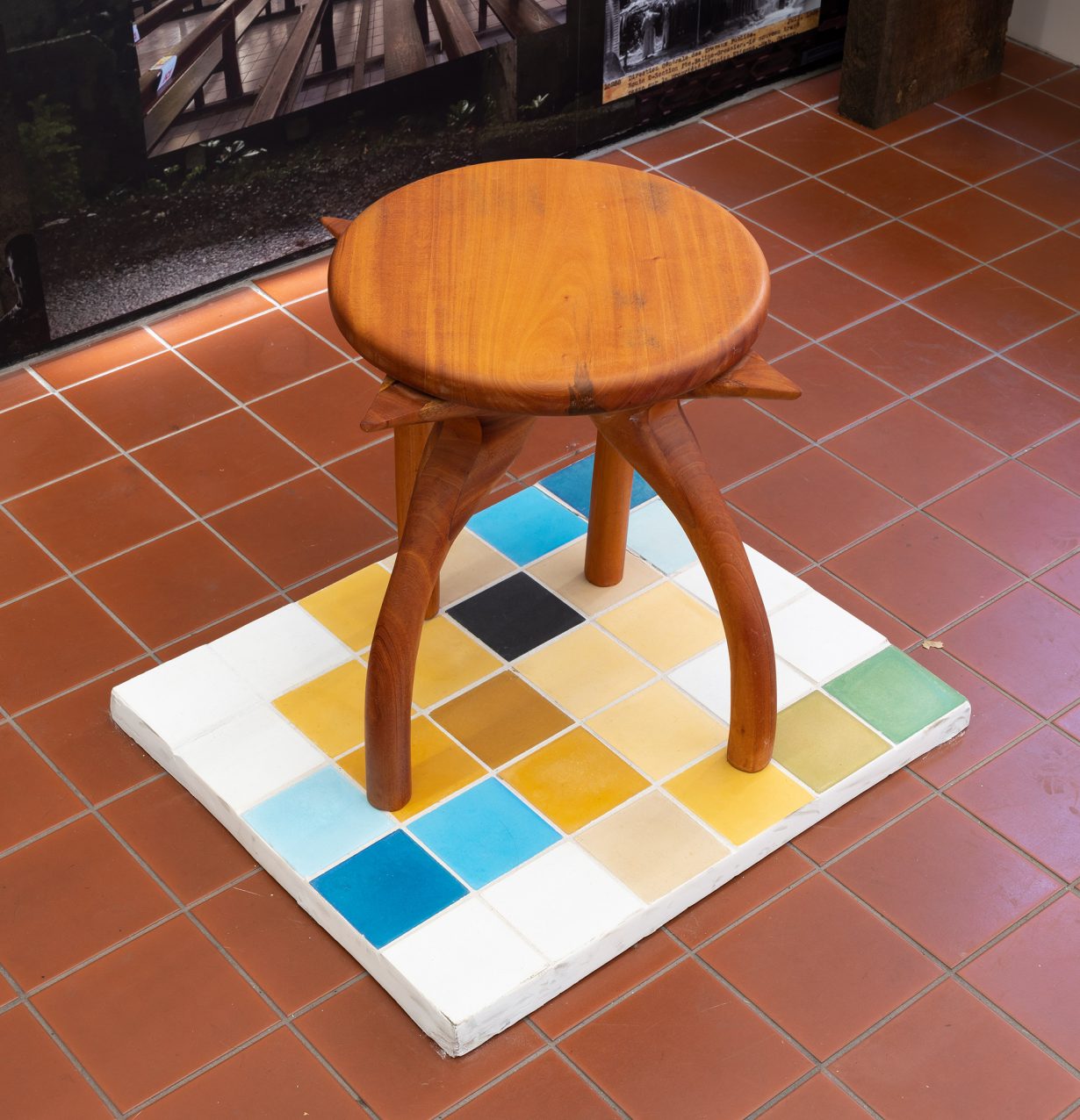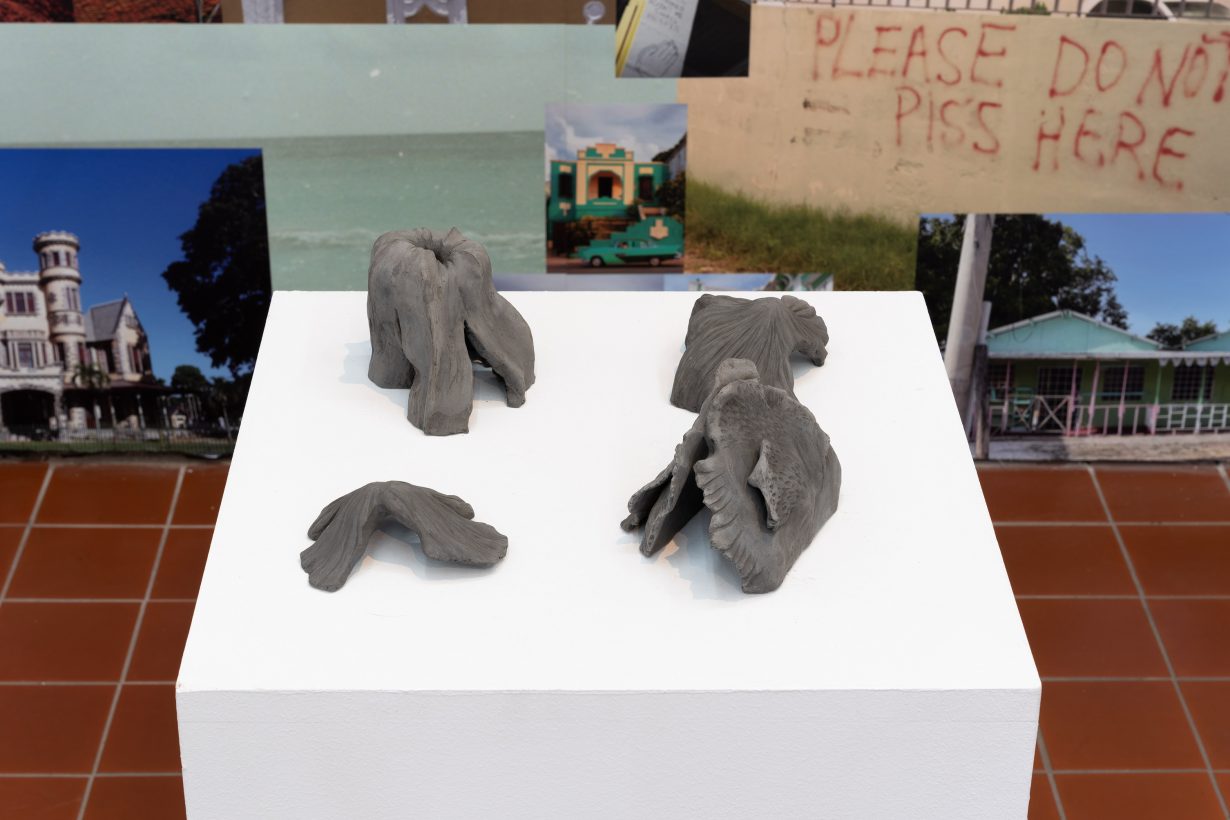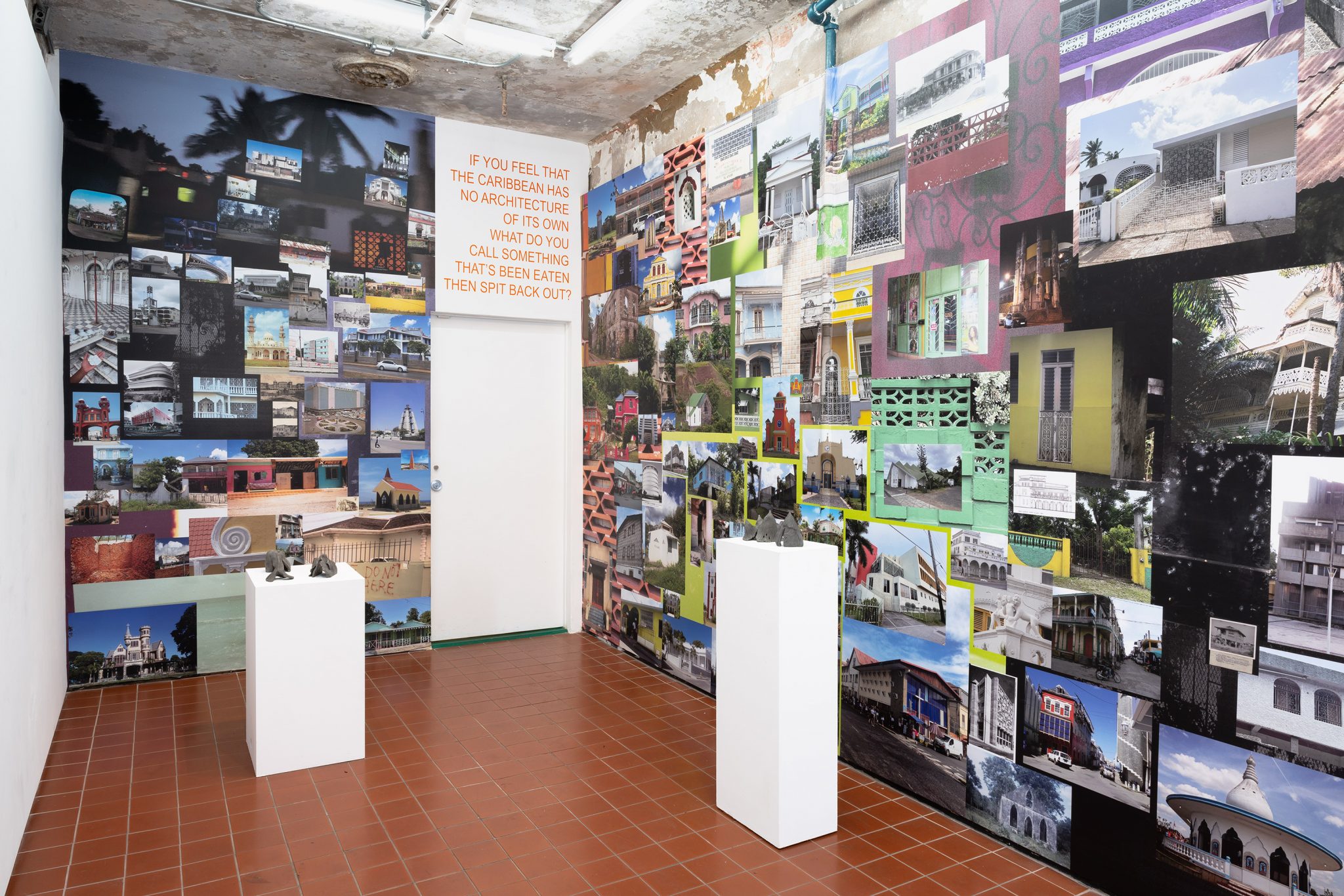The built environment of the Caribbean is best understood as a reflection of the relationship between people, landscapes and ecosystems
“If you feel that the Caribbean has no architecture of its own, what do you call something that’s been eaten then spit back out?” The question, unsigned and printed in uppercase vinyl lettering on the back wall of Entrance’s ground floor gallery, interrupts a floor-to-ceiling collage of inkjet prints. This collage, Missorting Pigeonholes (2024), features sites around the Caribbean: churches, houses, monuments, cemeteries and plazas evincing a hodgepodge of Modernist, Brutalist, Baroque, Neoclassicist, Spanish Revival, Victorian and Art Nouveau influence. Some of the images zoom in on eclectic ornamental details, vernacular elements that have been metabolised with these varied architectural styles to form a uniquely accretive Caribbean aesthetic.
Missorting Pigeonholes is a small fragment of the image archive artists Shani Strand and Zenobia – working together under the moniker Sucking Salt – have been amassing with the help of friends, family and the internet since 2019. Their research project is less about tracing physical landscapes across the Caribbean than about reflecting on the social and ecological relations that have been omitted from our ideas of place when we think of Architecture with a capital A – that is, the bare and functional Modernist and Brutalist building styles that European powers imposed on the Caribbean during the twentieth century. The collage acts as a conceptual backbone to the group show Modeling Ecologies: Take Care, which considers the Caribbean built environment as a set of lowercase architectures, or relationships – impossible to fully archive – among people, landscapes and ecosystems.

Familial relationships are invoked in the newly commissioned work by the artist duo Ibiyanε (Tania Doumbe Fines and Elodie Dérond) titled elombe 024 (2024), a mahogany stool that sits atop a colourful tiled platform in the ground floor gallery: Ibiyanε took as inspiration the chairs and tiles in the homes of Dérond’s grandmothers, where they would host large family gatherings. Ecological relationships are explored in Gwladys Gambie’s Corals Sheds (2024), tiny architectural models of coral-shaped sheds made of clay, sargassum seaweed and bagasse (the pulp extracted from sugarcane), displayed on nearby pedestals: Gambie’s sculptures refigure seaweed from an invasive species into something that might be productively utilised as a building material.
Among the works presented here, the video Training Station (2020) by Deborah Anzinger, on view in Entrance’s basement, stands out. Filmed in Maroon Town, Jamaica, a site to which many enslaved Africans escaped from coastal plantations and where, in the eighteenth century, the Maroons fought and won against colonial British forces, in large part due to arboreal guerrilla tactics, the video shows panning shots of plants and insects as Anzinger, in voiceover, narrates the history of the land. This includes the history of a reforestation project and community craft space she has been leading on her great-grandparents’ property in Jamaica since 2020. By reading from personal archival documents – emails about the delivery of mahogany seedlings and tips for their planting, letters to her mother, research inquiries and work agendas to do with harvesting grass and ‘a bit of weaving’ – Anzinger articulates a point of connection between those who apply their labour to the land and what grows from these organised efforts that the rest of the exhibition in turn supports.

The works in Modeling Ecologies build over, against and through the official archives of Modernist and Brutalist architectural history, bringing overdue attention to the minor architectures and informal relationships that persist in the Caribbean despite lingering colonial pressures to standardise and streamline domestic and natural environments. “Don’t be afraid of the colonial archives”, Anzinger says in Training Station. “Make them work for you”. Uttered as if in response to the question posed on the ground-floor gallery wall, Anzinger’s instruction challenges viewers to ruminate on history and create new forms from its rich pulp.
Modeling Ecologies at Entrance, New York, 14 November – 21 December 2024
